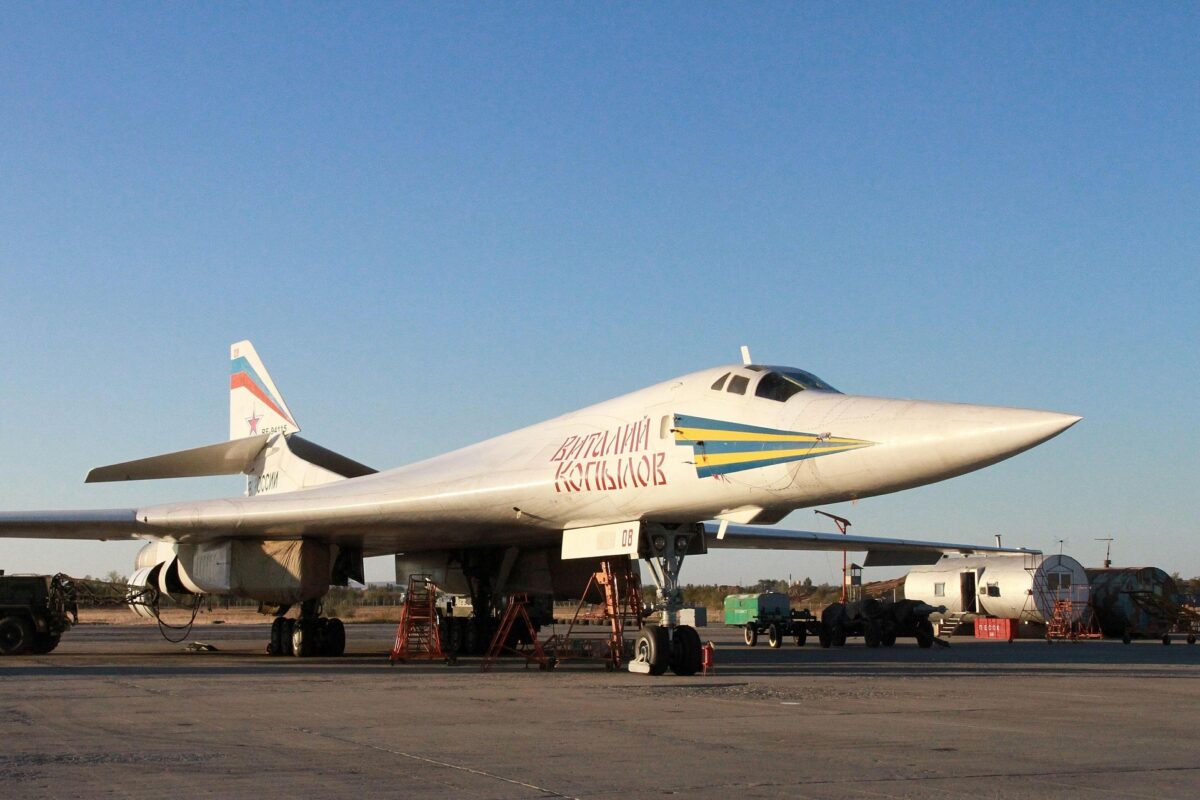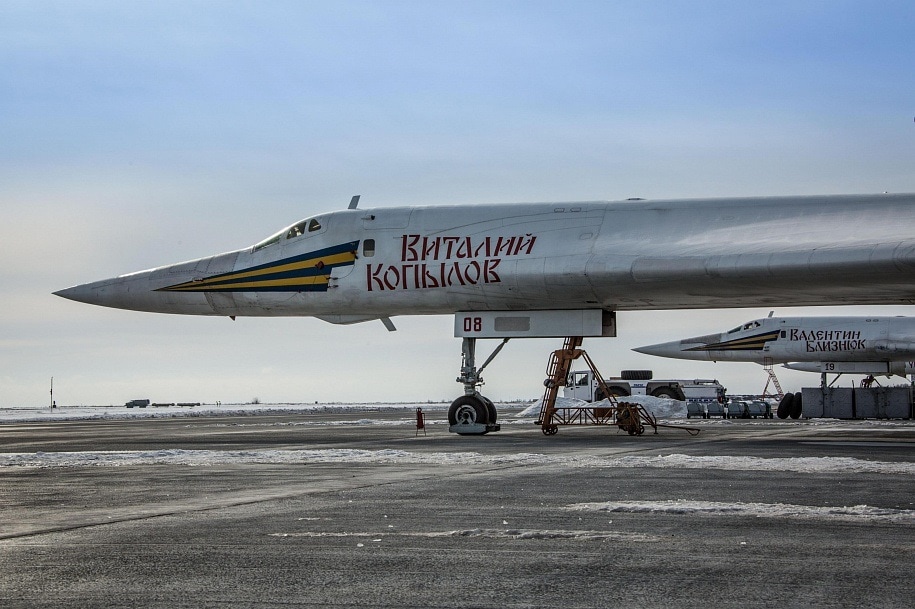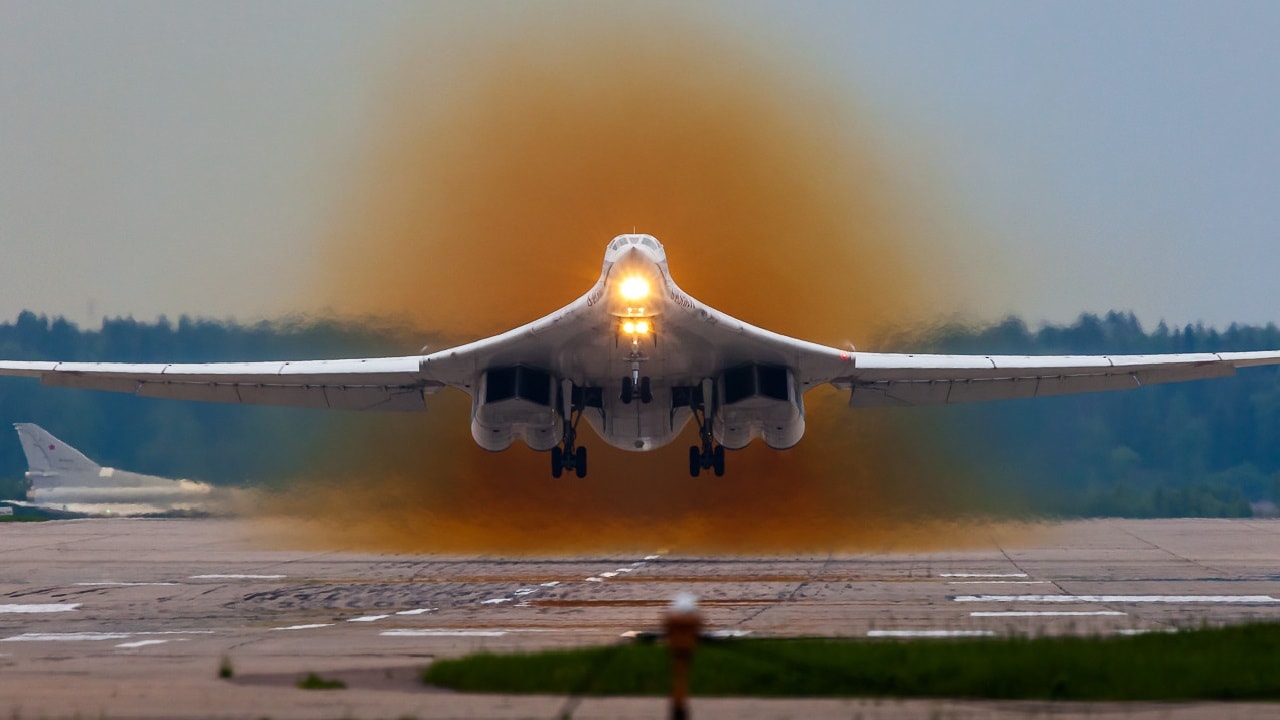While the design itself might be old, the Tu-160 bomber is getting a reboot for service in the 21st century. Of course, when it comes to new equipment for the Russian military, what Moscow wants and what it can afford always seem to differ, especially thanks to the war in Ukraine and sanctions: Despite its origins in the twilight years of the Soviet Union, Russia’s military leaders hope to make the Russian Tu-160 strategic bomber a mainstay of Moscow’s future bomber fleet. While it has jumped many hurdles already to restart production of the aircraft after a decades-long pause, many obstacles remain that would present challenges to producing the Tu-160 in the quantities that Moscow might hope.
Development and Capabilities of the Tu-160
Alternatively known by its Russian nickname White Swan (Belyi Lebed’) or the “Blackjack” under its NATO designation, the Tu-160 is one of the most distinctive bombers in Russian service today. Development of the Tu-160 initially began in 1972 as an answer to the American XB-70 Valkyrie, which was in development at the time before it was eventually cancelled. The White Swan first flew in 1981 and was in operational service by 1987.
Today, the Russian Aerospace Forces rely on the White Swan’s modernized Tu-160M variant (which often includes the further-upgraded Tu-160M2 configuration). The Soviet and Russian aircraft industry only produced 36 Blackjacks before production was shut down in 1994 (with some examples only being partially completed at that time). Russia likely has around 17 examples of the aircraft in its arsenal in service today. The first entirely new example of the White Swan from its renewed production run flew for the first time in January 2022.
Russia’s Tu-160Ms are powered by four NK-32-02 engines, which can propel the aircraft to speeds of up to Mach 2 with a range of roughly 7,500 miles. The variable-wing configuration of the Tu-160 gives it flexibility in flight characteristics, depending on the mission. With its intended purpose of firing cruise missiles at standoff distance in mind, the Blackjack is capable of carrying and firing nuclear-capable Kh-55MS cruise missiles, as well as a variety of other non-nuclear cruise missiles and anti-ship missiles.
Restarting Production of Russia’s Tu-160 White Swan
In 2015, Russia revealed that it would resume production of the White Swan, decades after serial production ceased. This was joined in 2017 by an announcement by Russian Deputy Prime Minister Yuri Borisov that Russia’s entire fleet of Blackjacks would undergo a “deep modernization.” Plans to purchase as many as 50 new examples of the aircraft and modernize the existing fleet are likely intended to increase Russia’s strategic bomber capabilities in the near- to medium-term future while efforts to design a new bomber model for the future has faced setbacks.
However, restarting production of the Tu-160 isn’t as easy as simply flicking a switch to bring production lines back online. Instead, the Russian Tupolev aircraft design bureau and its Kazan Aircraft Production Association (KAPO) subsidiary plant were forced to contend with a whole host of supply chain and logistics issues when the order to restart production was made in 2015. In particular, the KAPO plant was faced with the prospect that it had lost the capability to produce many of the most high-tech components of the White Swan since production ceased in the 1990s. Supply chains which previously relied on Ukrainian contractors in Soviet and immediate post-Soviet times needed to reworked as relations between Kyiv and Moscow had fallen precipitously to a (then) all-time low as a result of Russia’s seizure of Crimea and invasion of eastern Ukraine.
What is the Current State of Russia’s Renewed Production of the Tu-160?
Like the rest of the Russian arms industry and other high tech-sectors of the Russian economy, Tupolev (and its state-owned parent conglomerate, the United Aircraft Corporation [UAC]) is facing significant headwinds brought on by Western technological sanctions which have only intensified since Russia’s 2022 invasion of Ukraine.
However, even without these sanctions in place, the Russian aerospace industry would likely struggle to accomplish to meet targets established by the Kremlin, which are centered around a rapid pace of production throughout the 2020s. With the per-unit cost of the first White Swan examples from this production series likely around $270 million, it is yet to be seen whether Russia will actually be willing or able to spend that amount of money to upgrade and expand its bomber fleet, especially while its invasion of Ukraine rages on.
For now, Tupolev is officially under contract to produce the first ten of the 50 total bombers sought by the Kremlin. While official expectations set by the Russian Ministry of Defense claim that these ten Blackjacks will all be delivered by the end of 2027, Russia’s military aerospace industry is not known to be particularly capable of meeting tight deadlines, such as in the case of the Su-57 multirole fighter (a product of the Sukhoi design bureau, which is also under the UAC umbrella).

Tu-160 Bomber. Image Credit: Russian Government.

Tu-160 Bomber. Image Credit: Russian Government.
Production issues built into Russia’s military aviation industry as well as a lack of funds available for the production and further development of aircraft such as the Tu-160M will challenge Moscow’s plans to make the Blackjack a mainstay of Russia’s strategic bomber fleet in the future. Russian military leaders could potentially be forced to choose between rebooting the Tu-160 and developing new bombers for the Russian Aerospace Forces.
Wesley Culp is a Research Fellow at the Center for the Study of the Presidency and Congress. He regularly writes on Russian and Eurasian leadership and national security topics and has been published in The Hill as well as in the Diplomatic Courier. He can be found on Twitter @WesleyJCulp.

